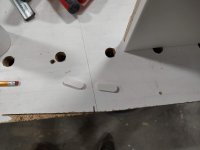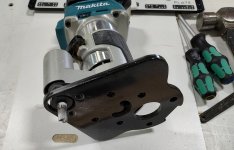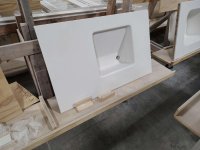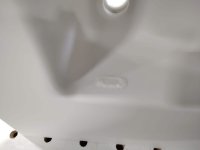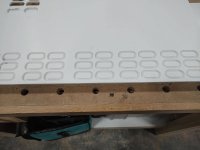I said the same thing, the first time. There were 28 of them to do, in the field, to previously installed sinks.
Believe it or not, this is not only in a commercial setting (not residential) it's in a hospital!
Apparently, the thinking is to block bacteria from growing in the darkness and potential moisture-rich area?
Like I said, the oval sinks, from the last time, are available from the manufacturer without the overflow.
It was just an oversight by someone, that they were done that way.
I found the pic of the plugs, but maybe didn't get one of a sink? I find that hard to believe.
[member=3513]PaulMarcel[/member] Really? That surprises me [huh] The first one I ever had was a DeWalt, 20 years ago. It was only available as part of what they called Laminate trimmer "Installers set", which was the main motor/fixed base, a tilting base, an underscribe plate, and the off-set base. It is not particularly user-friendly, because every operation required the tear-down of another. The selling point was that you have everything in one small case/kit. Great for a guy in an on-site emergency, while taking minimal space in the van, since it's not a frequent-flyer.
The DeWalt was no longer available when I was replacing things, from the fire, so I got a couple of the similar kits in the Bosch Colt platform. Not long after that I got a Makita compact, in the full set form, because it included a plunge base too. That's something the Bosch was missing. (there is one, separately, not in that kit) Then I discovered the performance of the cordless version of the Makita compact and that the motors were interchangeable with the corded ones.
For laminate work, losing the cord is a huge advantage. The cords tend to drag/snag and the power required is minimal, perfect mates.
There are some odd restrictions of those off-set bases though. Bit height and/or cut depth are a bit challenging, as well as the amount of material you can cut in one go. The bit is driven by a small belt, so it won't take a big load against the cutter. It's really intended as an emergency situation solution, to minimize filing in awkward places.

